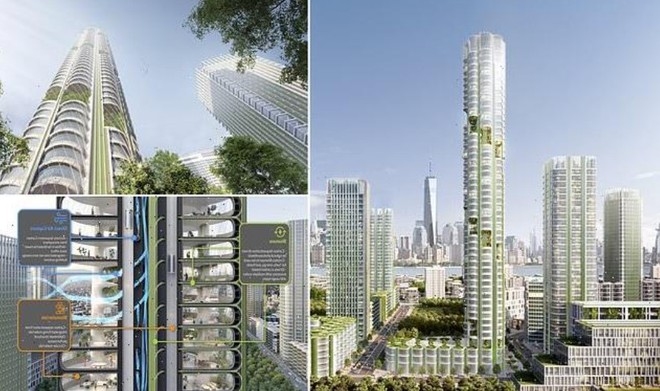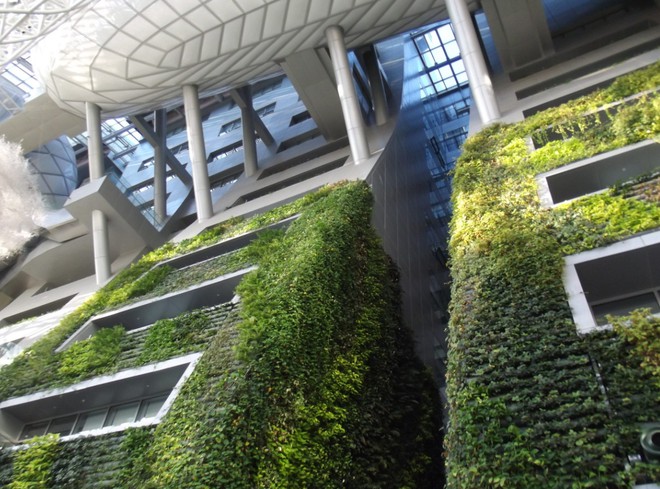On 11/11 at the United Nations Climate Change Conference 2021 (COP26), Skidmore, Owings & Merrill (SOM) announced their proposal for Urban Sequoia, a network of skyscrapers can absorb carbon or CO2 in the atmosphere.

Efforts to reduce carbon from construction activities are receiving more and more attention as the construction sector is responsible for up to 40% of global carbon emissions. All efforts to reduce carbon emissions begin at the inception, design and construction stages.
However, if successful, the Urban Sequoia project could reduce CO2 emissions into the atmosphere after construction is completed. The design of the building is the result of integrating green building solutions, including material reduction, carbon capture technology, biomaterials and design optimization.
Reducing CO2 emissions from construction works
The reason that a combination of the above solutions can help cut carbon emissions is due to two reasons. Materials used to construct buildings including bio-brick, hemp concrete, wood and bio-concrete emit less carbon than conventional construction materials such as steel and traditional concrete.
Thanks to the use of green materials, skyscrapers also become more environmentally friendly. Not to mention that buildings after construction can absorb carbon when put into use. This means that buildings will no longer be part of the problem, but will become the solution.

SOM’s concept building can eliminate carbon using an alternative design approach. The company performed the first test steps with a high-rise building to test the effectiveness of the solution.
Thanks to the use of materials of natural origin, the prototype can absorb 1 thousand tons of CO2 annually, equivalent to the absorption capacity of about 48,500 trees. This number is more than 3 times higher than current construction technologies. The absorbed CO2 can be used to produce algae and biomass, carbon sequestration materials.
Buildings capture CO2 in the air through the stack effect. The company’s ultimate goal is not one high-rise building or even multiple complexes but development on a large scale, possibly in multiple cities.
The idea of ”green” buildings that can absorb CO2 is much more convenient than planting trees. Because buildings can have many different functions, from schools, houses, hospitals, shopping malls, etc. The idea of SOM is basically to turn buildings in the city into trees and each The city is a forest of trees.
Refer to InterestingEngineering
.
